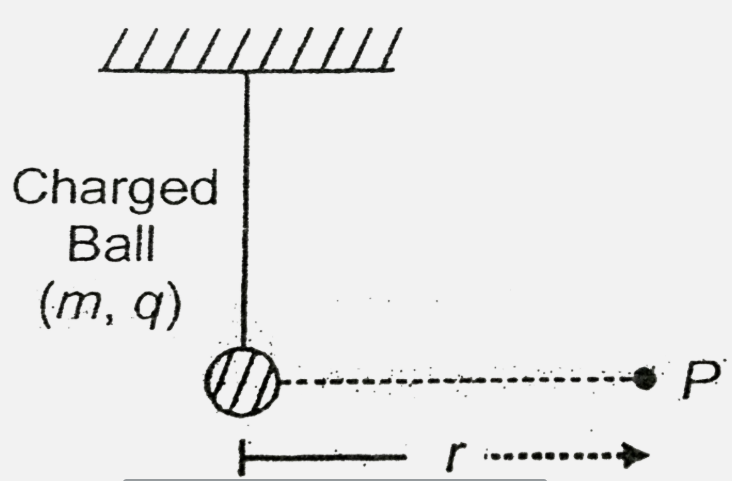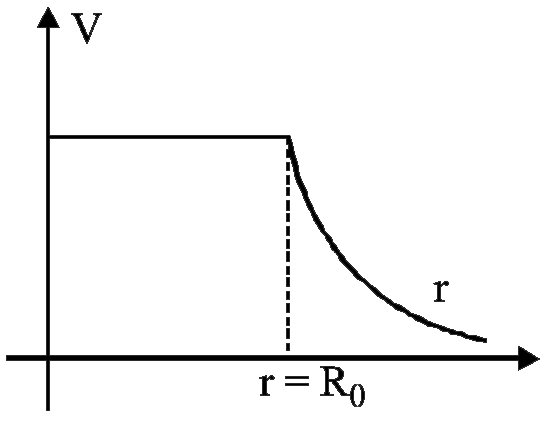The maximum electric field upon the axis of a circular ring (q,R) is given by E=qπε0R2×16√n . Find n.
The correct Answer is:3
Step by step video, text & image solution for The maximum electric field upon the axis of a circular ring ( q,R) is given by E = ( q)/( pi epsilon_(0)R^(2))xx(1)/( 6 sqrt(n)) . Find n. by Physics experts to help you in doubts & scoring excellent marks in Class 12 exams.
Updated on:21/07/2023Topper's Solved these Questions
- ELECTRIC CHARGES AND FIELDS BOOK - AAKASH INSTITUTECHAPTER - ELECTRIC CHARGES AND FIELDS EXERCISE - SECTION-H( MULTIPLE TRUE-FALSE QUESTIONS)
10 Videos
- ELECTRIC CHARGES AND FIELDS BOOK - AAKASH INSTITUTECHAPTER - ELECTRIC CHARGES AND FIELDS EXERCISE - SECTION-I(SUBJECTIVE TYPE QUESTIONS)
2 Videos
- ELECTRIC CHARGES AND FIELDS BOOK - AAKASH INSTITUTECHAPTER - ELECTRIC CHARGES AND FIELDS EXERCISE - SECTION-F ( Matrix-Match Type Questions)
5 Videos
- DUAL NATURE OF RADIATION AND MATTER BOOK - AAKASH INSTITUTECHAPTER - DUAL NATURE OF RADIATION AND MATTER EXERCISE - ASSIGNMENT (SECTION-D)
10 Videos
- ELECTROMAGNETIC INDUCTIONBOOK - AAKASH INSTITUTECHAPTER - ELECTROMAGNETIC INDUCTIONEXERCISE - ASSIGNMENT(SECTION -D) Assertion-Reason type Question)
15 Videos
Similar Questions
The electric field at point P due to a charged ball is given by
Ep=14πε0qr2
To measure 'E' at point P, A test charge q0 is placed at point P and measure electric force F upon the test charge. Check whether Fq0 is equal to 14πε0qr2 or not .

View SolutionThe maximum electric field intensity on the axis of a uniformly charged ring of charge q and radius R is at a distance x from the centre of the ring.The value of x is
View Solution
Knowledge Check
The maximum electric field intensity on the axis of a uniformly charged ring of charge q and radius R will be
A14πε0q3√3R2B14πε02q3R2C14πε02q3√3R2D14πε03q2√2R2The electric field strength due to a ring of radius R at a distance x from its centre on the axis of ring carrying charge Q is given by
E=14πε0Qx(R2+x2)3/2
At what distance from the centre will the electric field be maximum ?Ax=RBx=R2Cx=±R√2Dx=√2RThe maximum electric field at a point on the axis of a uniformly charged ring is E0. At how many points on the axis will the magnitude of the electric field be E0/2.
A1B2C3D4
For spherical symmetrical charge distribution, variation of electric potential with distance from centre is given in diagram Given that : V=q4πε0R0 for r≤R0andV=q4πε0r for r≥R0
Then which option (s) are correct :
(1) Total charge within 2R0 is q
(2) Total electrosstatic energy for r≤R0 is non-zero
(3) At r=R0 electric field is discontinuous
(4) There will be no charge anywhere except at r<R0

View SolutionAn infinite number of charges, each equal to q, are placed along the x -axis at x=1,x=2,x=4,x=8, etc. The electric field at the point x=0 due to the set of charges is qnπɛ0. Find n.
View SolutionIf the elctron ( charge of each electron =−e) are shifted by a small distance x,a net +ve charge density ( per unit area ) is induced on the surface. This will result in an electric field E=nex/ε0 in the direction of x and a restoring force on an electron of
−ne2xε0,
Thus m..x=−ne2xε0
or ..x+ne2mε0x=0
This gives ωp=√ne2mε0=1.645×1016s−1
as the plasma frequency for the problem,.
View SolutionThe maximum electric field at a point on the axis a uniformly charged ring is E0. At how many points on the axis will be magnitude of electric field be E0/2
View SolutionIn the following question a statement of assertion (A) is followed by a statement of reason (R )
A : Two large conducting spheres carrying charges Q1andQ2 are brought close to each other. The magnitude of electrostatic force between them is exactly given by Q1Q2/4πε0r2 , where r is the distance between their centres.
R: Here charges Q1andQ2 can be assumed to be concentrated at the centres of their respective spheres.
View Solution